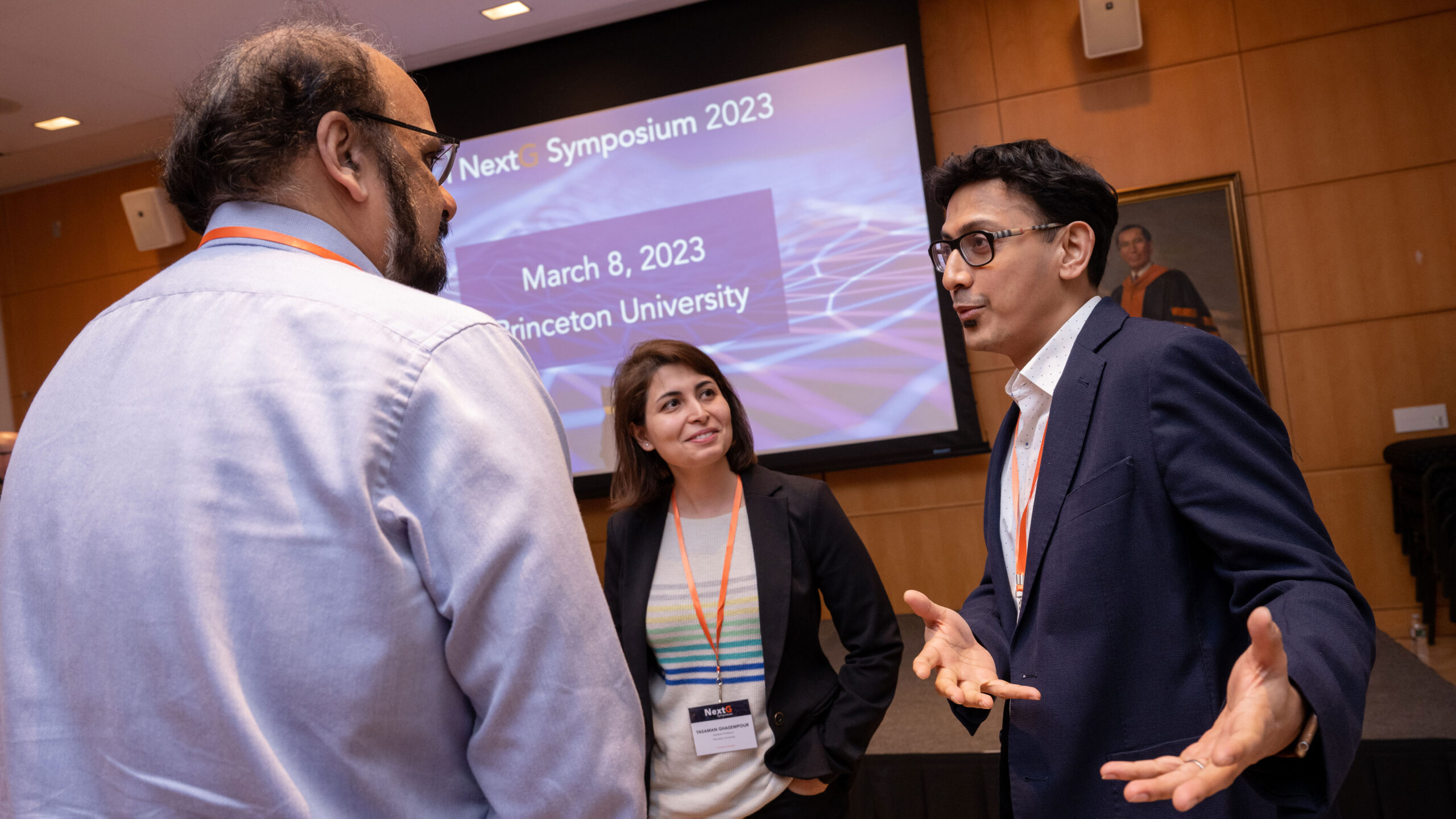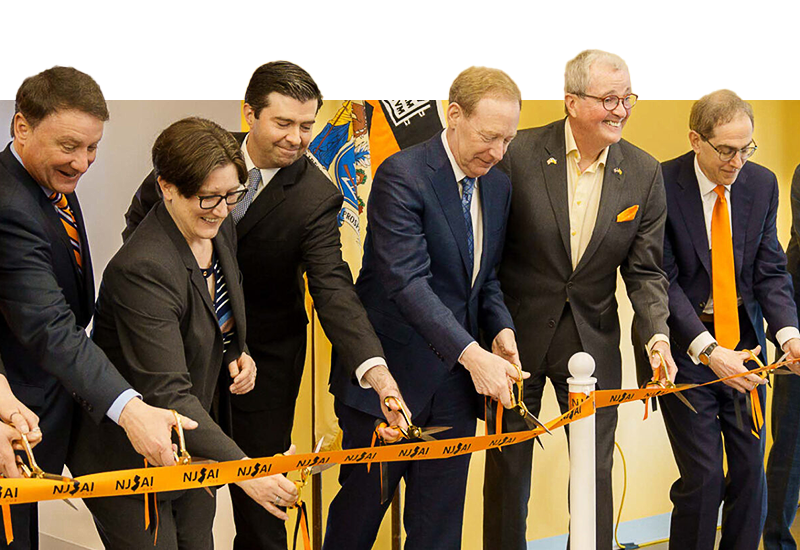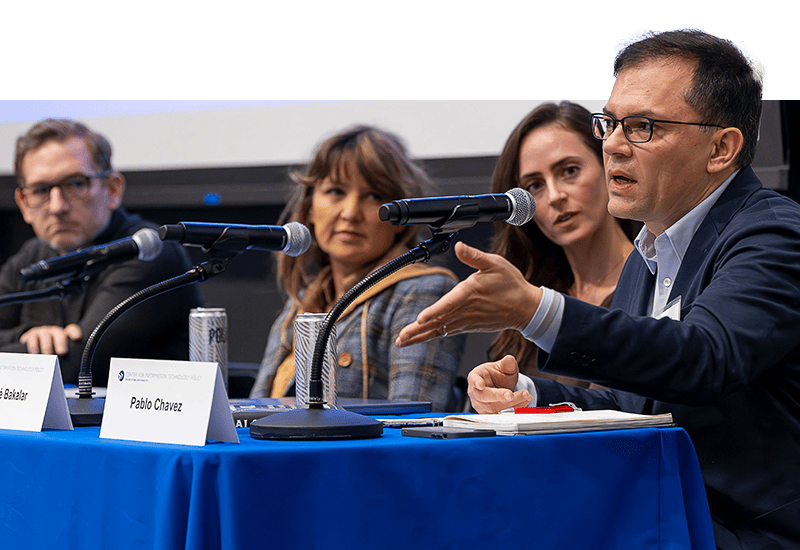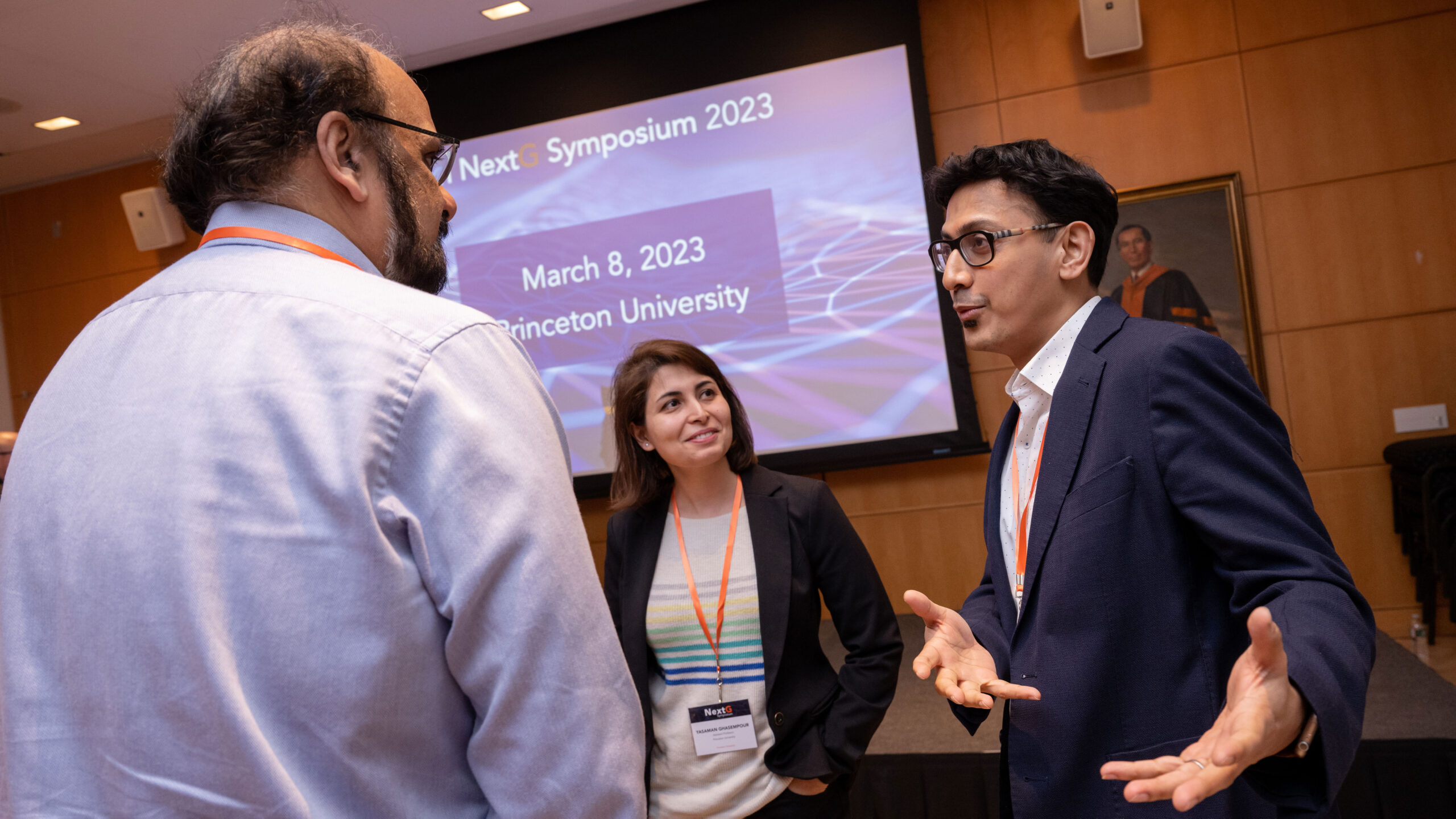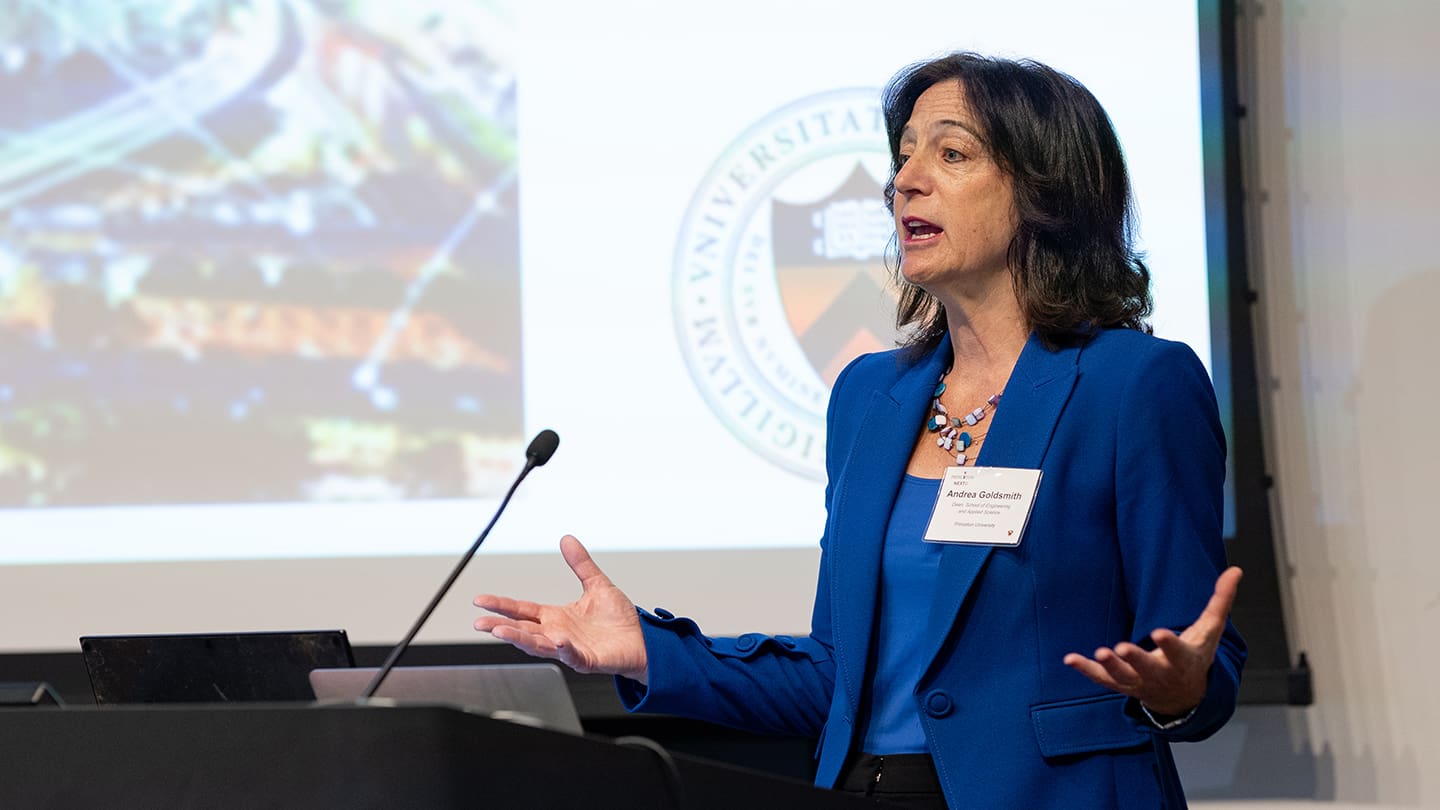
At NextG symposium, tech leaders stress collaboration between industry, academia and government
By
on
More than 100 people representing around 30 organizations attended. Executives from AT&T, Ericsson, Intel, NEC, Nokia and Samsung, as well as a representative of the National Science Foundation, gave keynote talks or participated in panel discussions. Topics ranged from AI and augmented reality to expanding the telecom spectrum and addressing technical barriers to innovation.
“I really do believe this is the most exciting time for wireless technologies as we push forward the next generation,” said Andrea Goldsmith, dean of Princeton’s School of Engineering and Applied Science. She said advancing the frontier in this field will require deep engagement not only with the technology but also with policy — across academia, industry and government. Goldsmith began working on wireless communication in the mid-1980s and pioneered several key innovations that enabled fast and reliable Wi-Fi and cellular communications that are now deeply integrated into daily life.
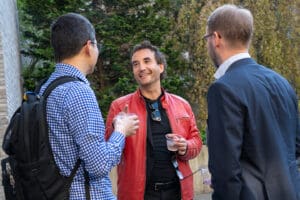
In his keynote address, Mischa Dohler, vice president of emerging technologies at Ericsson, said that while not all academic research translates to tangible products, the fundamental work done by academic researchers decades ago is responsible for much of the progress made over the past 20 years. “We are where we are because you were there and provided that intellectual firepower we needed,” he said.
Goldsmith organized the symposium with NextG co-directors Kaushik Sengupta, professor of electrical and computer engineering, and Yasaman Ghasempour, assistant professor of electrical and computer engineering.
A poster session in the afternoon featured 25 graduate students and postdoctoral researchers presenting their findings to industry leaders and fellow academics. The posters were judged by industry participants for a set of awards based on the importance of the research and its potential for impact in practice. Graduate student Joshua Lederman and postdoc Subhajit Karmakar tied for first place. Lederman’s research looked into processing photonic signals for computing, while Karmakar’s work looked at high-speed wireless food sensing systems. Sayeri Lala and Malinda Huang shared second place for their work on interpretable neural networks. Emir Ali and Jonathan Zhou took third place for their work on AI-enabled circuits and antennas.
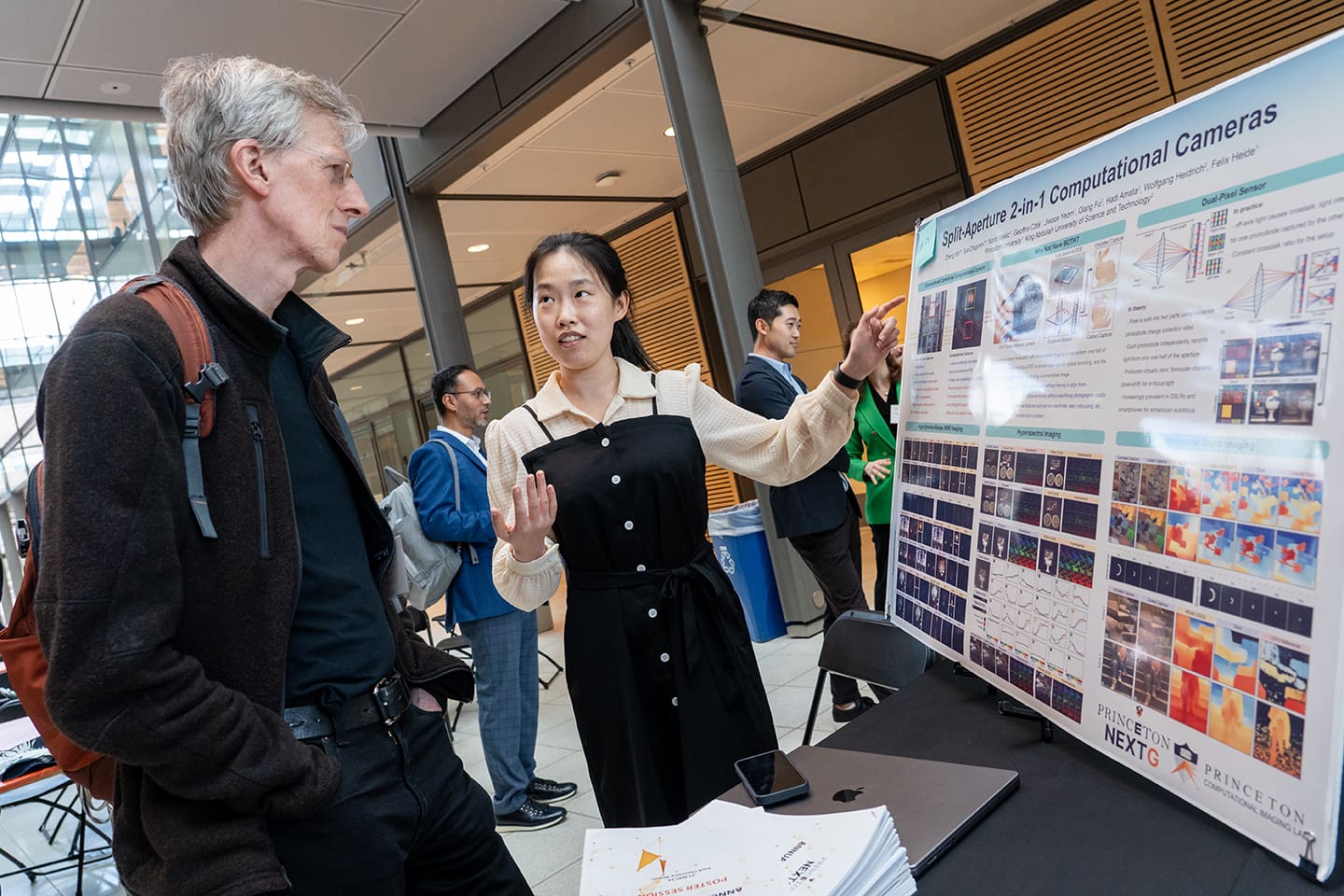
The NextG initiative has a unique value proposition to industry relative to wireless affiliate programs at other universities. In addition to participating in NextG symposia, workshops, and distinguished speaker series, industry members have the opportunity to create policy position papers and convenings, forge industry-academia-government partnerships to pursue funding and advocacy opportunities, and participate in an annual closed-door roundtable of chief executives to discuss technology and policy disruption. Ghasempour presented an overview of the value proposition in the opening remarks and talked about the successful industry-academia engagement activities organized in Princeton since the kickoff in November 2023. Recruiting graduate students is another major benefit for industry partners of the NextG Initiative. “The program makes it easy for companies to support specific projects led by Princeton researchers and to host live and virtual recruiting events for our undergraduate and graduate students,” Ghasempour said.
This year’s symposium covered a broad discussion about what the future holds for wireless communication and networking. The role of artificial intelligence and machine learning in the design, deployment and operation of future networks came up frequently, as did the need to balance the exciting potential of technical frontiers with the cold realities of product deployment and revenue.
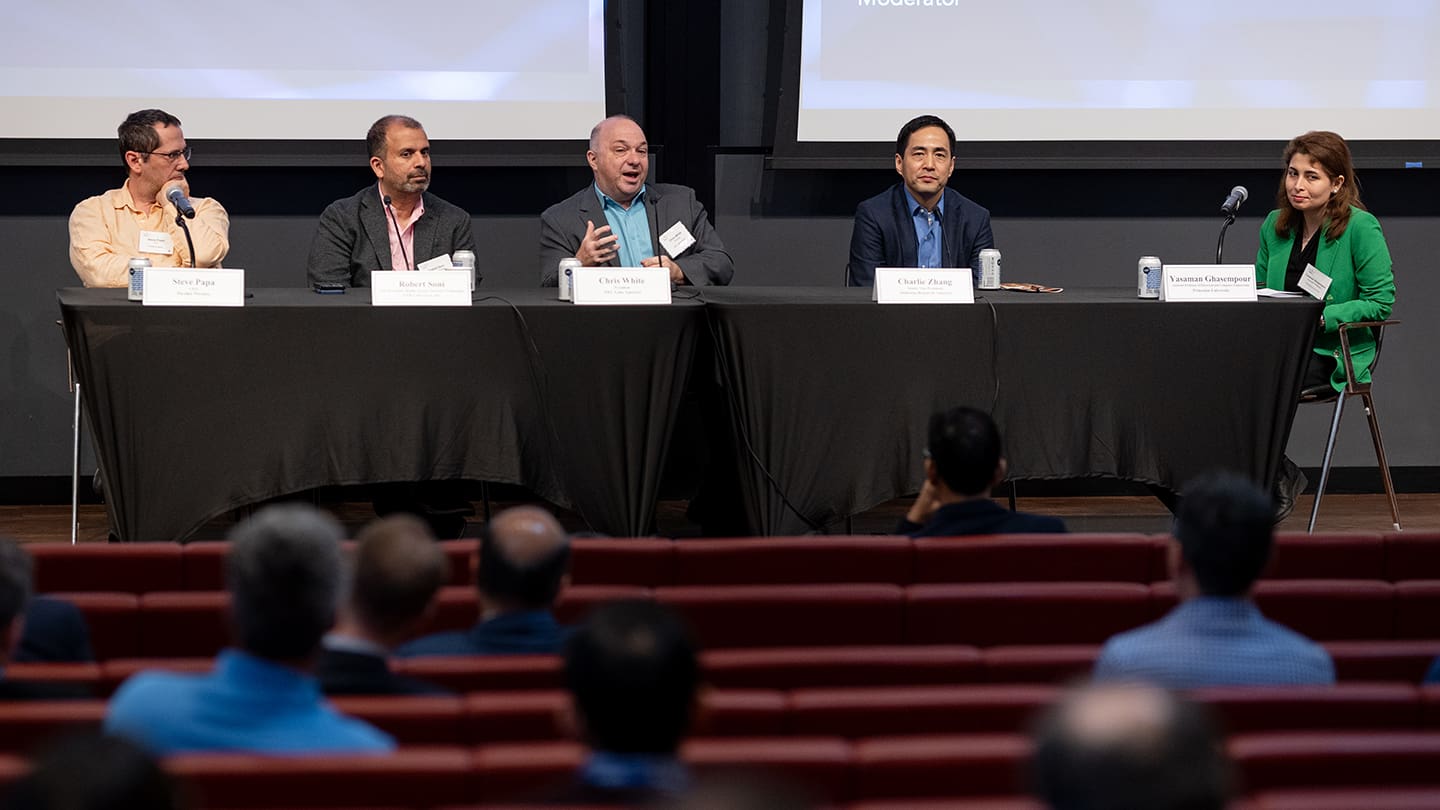
“Something that is hard to do is not necessarily important commercially,” said Chris White, president of NEC America. He pointed to research that is currently pushing the frontiers of what’s possible in wireless sensing and communication but that could be extremely hard to roll out to consumers.
It was the sort of moment the symposium was designed to facilitate, bringing hardnosed commercial concerns face to face with the visionary technology research cultivated in academic labs.

In addition to Dohler, the meeting featured keynote addresses by Peter Vetter, president of Bell Labs Core Research at Nokia; Sachin Katti, senior vice president at Intel; and Thyaga Nandagopal, division director of technology, innovation and partnerships at the National Science Foundation.
Welcoming industry partners to the symposium, Sengupta said that while Princeton is known for far-reaching work, especially in information processing and wireless communication, the NextG Initiative is an opportunity to more closely align the school’s research with real world impact. “We would like to work on fundamental research that has a translation potential,” Sengupta said.
